I've created the circuit below and have calculated the following values:
- R' (equivalent resistance of entire circuit) = 1 / ((1/470) + (1/470) + (1/470)) = 157 ohms
- I1 = VBattery / R1' = 6V / 157 ohms = 38.5 mA
- I2 = 6V / 470 = 12.76 mA
This seems correct to me since, because all three branches have equal resistance, each gets a third of the current supplied and 12.76 * 3 is roughly equal to 38.5 because of rounding.
I've built this circuit using a breadboard to check my calculations and I1 and I2 don't match. I'm aware that physical components won't be exactly the same as what they say they are, but I'm way off.
For example, these are the values I've measured:
- VBattery = 6.4V (this is fine, I understand it won't be exactly 6)
- I1 = 28 mA
- Each of the resistors are 476, 470 and 465, so this should give R' a total resistance of 155.8 ohms.
So the current I'm actually drawing is 28 mA instead of the 38.5 mA I've calculated.
The current on each branch is around 9.25 mA which at least makes sense since 9.25 * 3 = 27.75 which is very close to the supplied current that I'm measuring. But again, from my calculations using ohms law, the branches should be drawing around 12.76 mA.
Lastly, based off the current of 28 mA and the total resistance of 155.8, that implies the battery is only providing 4.36V, but I've measured and it's definitely providing 6.4V.
Update
I've rebuilt the circuit without the LEDs and the measurements I'm taking now match (or are very close to) the calculations I made.
But what I still don't understand is how the LEDs in the original circuit affect the calculations. People have correctly commented that I've just ignored them and that the voltage drop of 2V that they take is the 2V I was missing in my final point about 4.4V being less than the 6.4V being supplied.
But if I only knew the voltage of the battery and the values of the resisters, how would I calculate the current on each parallel branch?
I started finding the equivalent resistance of the entire circuit, which I labelled R' = 1 / ((1/470) + (1/470) + (1/470)) = 157 ohms, but this step seems to be wrong. Based on 6.4V from the battery and the current of 28 mA, it looks like I should be getting a R' value of 228 ohms. I thought LEDs had little to no resistance which is why I only took the resisters into account.
Further, regardless of the fact that I didn't involve the LEDs in my calculations, I assumed the voltage drop of each branch was equal to the battery voltage which is where I got the I2 value of 6V / 470 ohms = 12.76 mA. Either this calculation or assumption seems to be incorrect, too since the current should be nearer 9.25 mA.
Hopefully my questions make sense, but if it's easier and anyone has the time it would be great to see the calculation process step by step based off only knowing the value of the battery and resisters (perhaps that's not even possible and more information is needed to start with).
